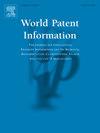Patent landscape and innovation trajectories of mRNA vaccine technologies
IF 1.9
Q2 INFORMATION SCIENCE & LIBRARY SCIENCE
引用次数: 0
Abstract
This study presents a comprehensive patent-based analysis of mRNA vaccine technologies, tracing their progression from experimental tools to scalable biomedical platforms after the COVID-19 pandemic. Leveraging Cooperative Patent Classification (CPC) codes and 25 years of global filings (2001–2025), we built a functional technology tree and mapped innovation across delivery systems, structural design, adjuvants and immune modulation, and Good Manufacturing Practice (GMP)-compliant manufacturing. Lipid nanoparticle-mediated delivery dominates recent applications, underscoring industry priorities in efficacy and scale. Growth curves signal entry into technological maturity, accompanied by wider participation from pharmaceutical firms, academia, and public institutes. Strategic profiling reveals contrasting R&D strategies: ModernaTX and Translate Bio pursue vertically integrated platforms; CureVac emphasizes antigen design and RNA stability; MIT focuses on delivery technologies with broad cross-domain reach. These patterns indicate that mRNA vaccines are becoming foundational infrastructure for precision medicine, oncology, and next-generation immunotherapies. Future competition is poised to intensify around delivery innovation, RNA stabilization, immune modulation, and robust GMP production. Our findings illuminate evolving intellectual-property strategies and highlight platform integration, manufacturing optimization, and cross-sector collaboration as key drivers of innovation in the global mRNA vaccine ecosystem.
mRNA疫苗技术的专利格局和创新轨迹
本研究对mRNA疫苗技术进行了全面的基于专利的分析,追踪了它们在COVID-19大流行后从实验工具到可扩展的生物医学平台的进展。利用合作专利分类(CPC)代码和25年的全球申请(2001-2025),我们建立了一个功能技术树,并绘制了跨越给药系统、结构设计、佐剂和免疫调节以及符合良好生产规范(GMP)生产的创新图谱。脂质纳米颗粒介导的递送主导了最近的应用,强调了功效和规模的行业优先级。增长曲线标志着进入技术成熟阶段,伴随着制药公司、学术界和公共机构更广泛的参与。战略分析揭示了对比鲜明的研发战略:ModernaTX和Translate Bio追求垂直整合平台;CureVac强调抗原设计和RNA稳定性;麻省理工学院专注于具有广泛跨领域影响的交付技术。这些模式表明mRNA疫苗正在成为精准医学、肿瘤学和下一代免疫疗法的基础设施。未来的竞争将围绕递送创新、RNA稳定、免疫调节和稳健的GMP生产而加剧。我们的研究结果阐明了不断发展的知识产权战略,并强调了平台整合、制造优化和跨部门合作是全球mRNA疫苗生态系统创新的关键驱动因素。
本文章由计算机程序翻译,如有差异,请以英文原文为准。
求助全文
约1分钟内获得全文
求助全文
来源期刊

World Patent Information
INFORMATION SCIENCE & LIBRARY SCIENCE-
CiteScore
3.50
自引率
18.50%
发文量
40
期刊介绍:
The aim of World Patent Information is to provide a worldwide forum for the exchange of information between people working professionally in the field of Industrial Property information and documentation and to promote the widest possible use of the associated literature. Regular features include: papers concerned with all aspects of Industrial Property information and documentation; new regulations pertinent to Industrial Property information and documentation; short reports on relevant meetings and conferences; bibliographies, together with book and literature reviews.
 求助内容:
求助内容: 应助结果提醒方式:
应助结果提醒方式:


